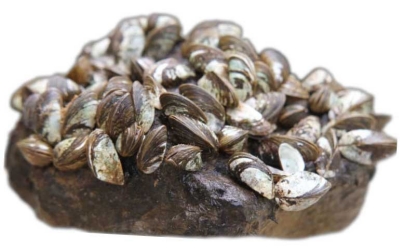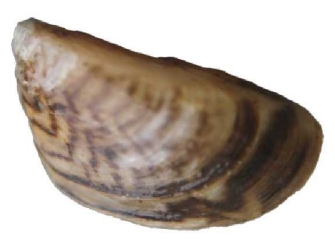Tennessee Aquatic Invasive Species
ANGLERS! TWRA in partnership with local fly-shops, the U.S. Forest Service and Trout Unlimited, are managing wader cleaning stations at multiple locations across East Tennessee to help prevent the spread of whirling disease and other non-native aquatic species. Stop by and clean your waders to help protect your waters!
Address:
North River Checking Station
Tellico River Road
Tellico Plains, TN
Maintained by TWRA
Address:
Tellico Trout Hatchery
3193 Tellico River Road
Tellico Plains, TN
Maintained by TWRA
Address:
Reliance Fly and Tackle
588 Childers Creek Road
Reliance, TN
Maintained by Hiwassee Chapter Trout Unlimited
Address:
Little River Outfitters
106 Town Square Drive
Townsend, TN
Maintained by Little River Chapter Trout Unlimited
Address:
Eastern Fly Outfitters
6209 Bristol Highway
Piney Flats, TN 37686
Maintained by Overmountain Chapter Trout Unlimited
Address:
South Holston River Fly Shop
608 Emmett Road
Bristol, TN 37620
Maintained by Overmountain Chapter Trout Unlimited
What is Whirling Disease?
Whirling disease is a condition caused by a microscopic parasite, Myxobolus cerabralis, that affects trout and salmon species. Native to Europe, whirling disease was first discovered in the United States in Pennsylvania in the 1950s.
The disease has since continued to spread and can now be found in numerous states including Tennessee, Virginia, North Carolina, West Virginia, and most northeastern and western states.
Impacted Species
Once introduced into the water, the parasite infects a common mud-dwelling worm found in lakes and streams. The parasite multiplies within the worm and is eventually released into the water where it drifts until it comes into contact with a trout.
It then infects the trout’s nervous system, consuming the fish’s cartilage and skeletal tissue. Trout with whirling disease may develop a black tail, deformities in the head and spine, or display “whirling” or erratic tail-chasing behavior.
Although an infected trout may not always die directly from the disease, it can affect their ability to swim, eat, and escape predators. Once the fish dies, the parasite is then released back into the environment, and the cycle starts over.
Whirling disease only affects fish in the trout and salmon family. Fish species other than trout and salmon such as Largemouth and Smallmouth bass, Bluegill, or Walleye cannot get whirling disease.
Other organisms such as humans, mammals, and reptiles cannot be infected. Eating an infected fish is not known to cause any harmful effects to humans or pets.
Fish in Tennessee that are susceptible to this disease include Brook Trout, Rainbow Trout, and Brown Trout. Lake Trout have only become infected under laboratory conditions.
Brown Trout (native to Europe, where the disease originated) can become infected and carry the disease but are less susceptible to the clinical symptoms (whirling behavior, black tail, etc.) of whirling disease unless heavily infested.
Rainbow and Brook trout are more susceptible to the disease.
Research has found that the age of the fish at first exposure to the parasite is important to the survival of the fish. Adult fish can contract the disease, however newly hatched fish are highly susceptible to the symptoms of whirling disease.
Current Status in Tennessee
Currently, there have been no confirmed cases of whirling disease in the state of Tennessee.
However, the parasite that can cause whirling disease has been confirmed in the North River, Doe River, and South Holston and Watauga tailwaters. Annual routine testing currently indicates that all TWRA hatchery facilities are disease free.
Tennessee Wildlife Resources Agency biologists will continue to collect trout across the state to determine the parasite distribution and any population impacts.
Threats to Tennessee
No negative impacts have been observed to date on the Doe River or South Holston and Watauga tailwaters. However, there is a concern for potential impacts in areas such as wild Brook Trout populations.
Treatment
There is no known cure to rid whirling disease now that it has been established, so the best way to protect Tennessee’s many trout fisheries is to prevent it from spreading.
What can you do to prevent the spread?
- CLEAN. DRAIN. DRY. Clean all equipment, such as waders, fishing gear, boats, trailers, and float tubes of mud before leaving an area when fishing. Careful cleaning using disinfectants such as bleach (soak in mild bleach solution for 10 minutes then rinse) will kill the parasite and many other aquatic nuisance species. Drain water from all motor units, live wells and buckets. Allow all equipment to dry for a minimum of 48 hours.
- DO NOT transport live or dead trout from one water body to another.
- DO dispose of fish parts carefully when cleaning trout (dry disposal in the garbage is best).
- CONTACT US if you observe signs of whirling disease in fish. TWRA.WhirlingDisease@tn.gov – Please provide a location and picture of the fish if possible.
Description:
The zebra mussel, Dreissena polymorpha, is a freshwater bivalve (containing two halves) mollusk, which rarely exceeds 1.5 inches and has a triangular shape like the letter “D”. The mussel resembles a small clam with alternating dark and light bands on the shell, resembling the stripes of a zebra. However, some may be entirely dark or light in color. The most distinguishing characteristic of the zebra mussel is the tuft of fibers called the byssal threads that grow from the foot and through the hinge, it produces a powerful glue for attachment to any hard surface. Zebra Mussel
History and Distribution:
The zebra mussel is native to parts of western Russia near the Caspian Sea. By the 1830s, the mussels had invaded most of Europe through a series of shipping canals. They entered North America through the release of ballast water from shipping vessels traveling from Europe. By the 1990s within the United States, they could be found throughout the Great Lakes, the Mississippi River, and its major tributaries including the Cumberland and Tennessee Rivers. The expansion of the mussel range has been a function of natural water flow, wildlife activity, and a variety of human pursuits, including boating, fishing, and the bait industry.
Life Cycle:
Zebra mussels typically live 3 to 5 years and are able to reproduce in their second year. A single zebra mussel may produce over 30,000 eggs per reproductive cycle, translating to more than one million eggs per spawning season when the water warms above 54 degrees Fahrenheit. Fertilized eggs develop into swimming microscopic larvae called veligers. These veligers can remain suspended in the water for 3 to 4 weeks before they find a hard surface to attach to, those that don’t find a substrate will die. Any hard surface is a suitable place for the zebra mussel to live such as rocks, metal, wood, vinyl, glass, rubber, fiberglass, intake pipes, boats, plants, other mussels, and bodies of small moving animals like crustaceans and turtles. Unlike most freshwater mussels, the zebra mussel grows in clusters containing numerous individuals.
Impacts:
Zebra mussels are filter feeders and feed on phytoplankton (tiny plants) and suspended particulates in the water column. Plankton is an important food source for young fish, native mussels, and other aquatic organisms. A single adult has the ability to filter large amounts of water (1 liter/day), which increases water clarity. Increased light penetration allows submerged aquatic plants to grow in deeper water and spread to a larger area, which may cause problems for recreational boaters and anglers.
The economic impact of zebra mussels can be extreme, due to their need to attach to hard surfaces and the ability to layer upon themselves. Industrial water intake structures are prime locations for attachment causing reductions in pumping capabilities and even blockages. They can also damage, cause costly repairs, and require frequent maintenance of boats and recreational motors. Even when they die, their sharp shells wash up on beaches; creating foul odors and cutting the feet of swimmers, which may result in reduced recreation.
Prevention:
Both movement of adult zebra mussels and the larval form (veligers), can infect other bodies of water. Adults can attach to boats and boating equipment that are moored in infested waters. They frequently attach to aquatic plants, which themselves may hitchhike a ride on boats, trailers, and other recreational equipment to new water bodies. Adults are able to close their shells and survive for many days in cool/moist conditions. Veligers can be transported in water being held in bilge areas, live wells, boat motors, bait buckets, and puddles of water on the deck of boats.
Research is ongoing to find ways to eliminate the presence of mussels in infested water bodies. Winter water body drawdowns have had a positive action in drying and killing the mussels. Native fish species such as sturgeon, yellow perch, freshwater drum, catfish and sunfish are known to consume them. Most management efforts are geared at preventing any further spread of zebra mussels, it is important to take the following steps to prevent their spread.
Before moving your boat from one water body to another
Inspect and remove aquatic plants, animals, and mud from your boat, trailer, and equipment. Scrapping of adult mussels may be necessary to remove them.
Drain all water from the boat, motor, bilges, live wells, etc.
Dispose of unwanted bait on land, not in the water.
Rinse your boat and equipment with hot water (>140℉), use high pressure particularly if moored in a water body for more than one day.
Dry your boat and equipment thoroughly (in the sun) for five days. If boats and trailers have been exposed to freezing temperatures for the winter, they are considered decontaminated.
OR Decontaminate after cleaning and draining, use one of the following approved cleaning solutions:
Disinfectant |
Concentration |
Contact Time |
Bleach Solution |
13 ounces per gallon of water |
10 Minutes |
Lysol |
As sold – 1% solution |
10 Minutes |
Vinegar |
As sold – 100% |
20 Minutes |
Scalding hot wash |
>140 ℉ |
10 Seconds |
Freezing |
<32 ℉ |
24 hours |






